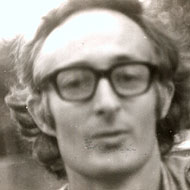Ruth First: An Ally of the Struggle
With the rise of apartheid in 1948, millions of Africans were left to suffer in South Africa. Many groups rallied against the Afrikaner government through political activism to change the future for the African people and free them from the white regime. Men such as Nelson
An Unmistakable Figure
Dulcie September was a fierce and ambitious anti-apartheid activist in South Africa. Her work with various resistance groups throughout her life, particularly the ANC, were incredibly influential in the fight against apartheid. However, despite the international recognition of September’s activist work and influence, her tragic death in 1988 was never fully investigated, and remains one of South Africa’s biggest mysteries.
Claire Albin

Claire Albin is a sophomore at Southern Methodist University originally from Shreveport, Louisiana. She is currently studying Marketing and Political Science and works as an intern at 3E Management.




